Cover story: Good native ground carpets are better for soil, climate
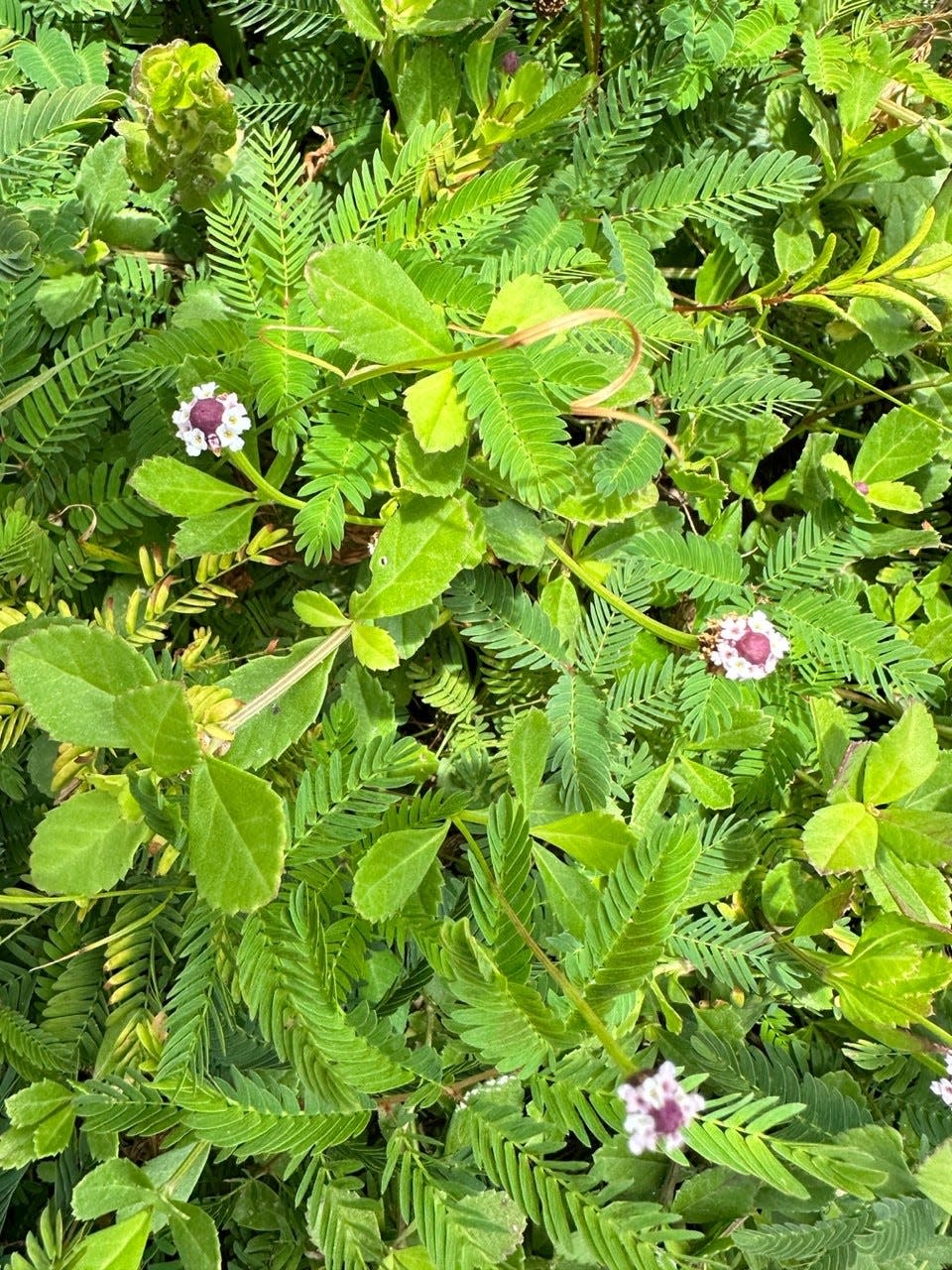
One of the best things about writing these articles is the feedback I have received from readers and fellow gardeners.
Many of you have reached out with questions, comments, or simply invitations to visit your gardens. I’ve met new friends and seen some wonderful landscapes, often filled with native species. And I do think we are making a difference; I am hearing more birds and have received photos of painted buntings, redstarts, owls, woodpeckers, and hummingbirds in peoples’ gardens, which is so exciting.
The more native plants we add, the more sustainable our landscapes will be. if we provide food and habitat for birds and pollinators, they will come!
We must also be aware of the dangers of chemical pesticides and fertilizers. We all know (or should) about the importance of carbon sequestration, but it’s been awhile since I’ve discussed the value of mycorrhizal fungi in our soils.
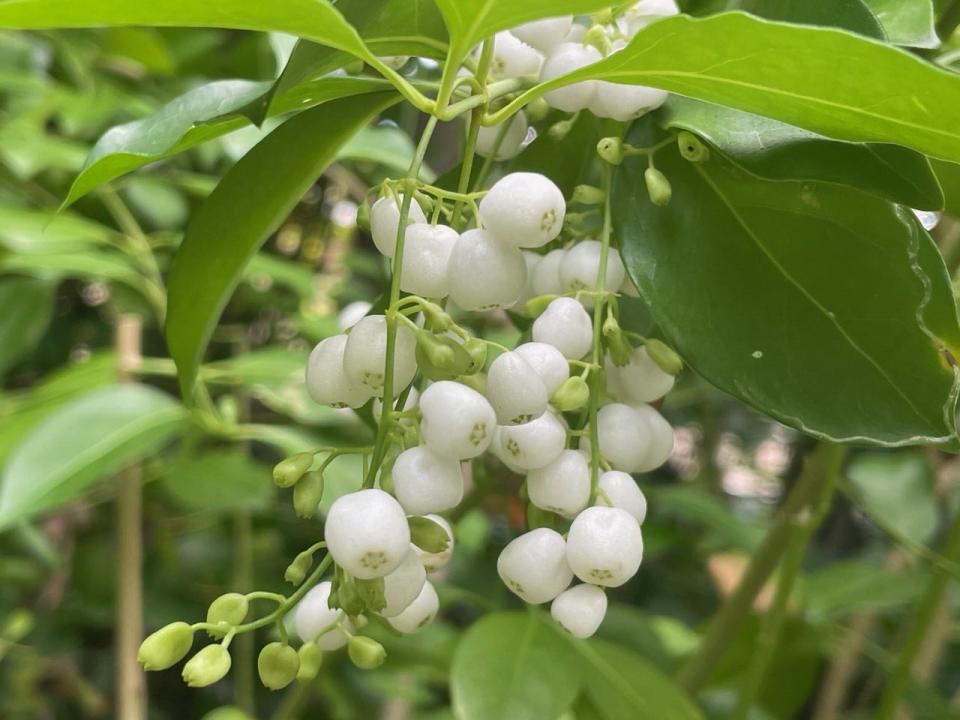
“Myco” means fungus and “rrhizal” means roots: these essential fungi grow on the roots of plants, building the health of our soils while sequestering greenhouse gases from the air. Plants generate the oxygen we breathe through photosynthesis, a process most of us learned about in grade school. Plants take in carbon dioxide (CO2) and with sunlight, through photosynthesis, they release oxygen.
Our problem today is that there is too much CO2 for our plants to convert to oxygen, so we need to store that carbon dioxide. This is global warming in a nutshell. What we have failed to notice is that we already have this capability. Healthy organic soil sequesters massive quantities of CO2 and holds it in the same way a tree stores carbon in its trunk.
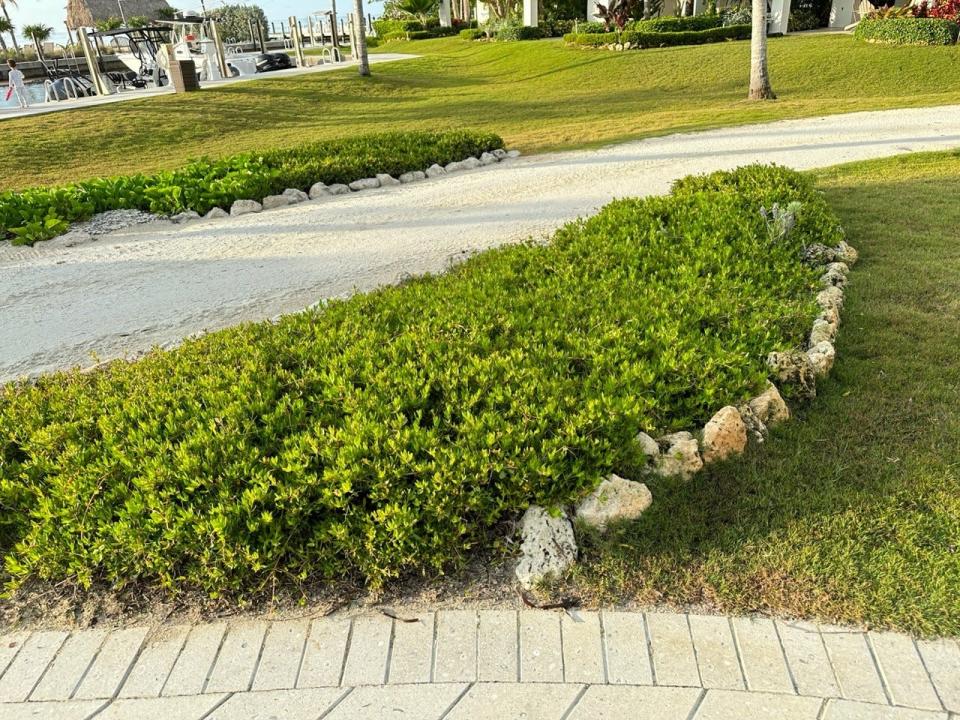
One tablespoon of healthy soil can contain up to 10 billion microbes, which are vitally important to all life on earth. Soil microorganisms are responsible for the release of nutrients from organic matter into the soil where they are taken up by plants. These bacteria and fungi increase soil fertility by recycling carbon, nitrogen and other compounds in organic matter into essential nutrients for plants. Simple, right?
One would think, but we’ve come to believe that our trees, shrubs and lawns cannot survive without chemical fertilizers, pesticides, and fungicides. What we don’t realize is that chemically treated soils have weakened microbial life, debilitated structure, and impaired ability to withstand the stresses of drought, heat, flooding or traffic. They cannot supply the essential nutrients plants need, nor can they sequester the carbon necessary to maintain a sustainable environment. And chemically treated soils are now the conventional norm for agriculture as well as for homeowners.
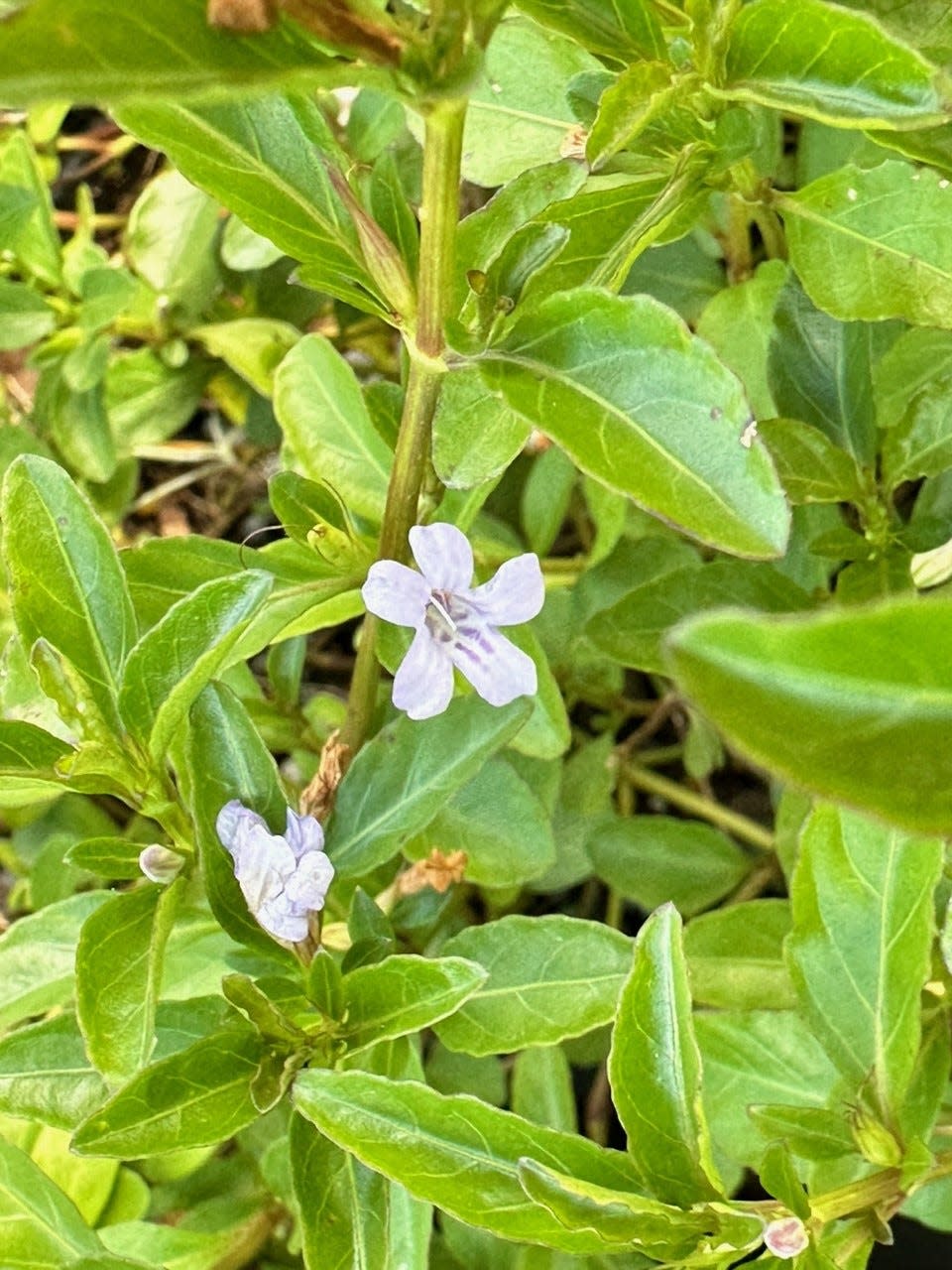
I bike all over this island and I can verify that not a day goes by without a parade of “environmental” trucks arriving to treat Palm Beach properties. Under the pretense of environmental services, these companies apply pyrethroids, neonicotinoids, carbamates, and glyphosate to your landscapes. Not only do these chemicals kill our vital pollinators and weaken the microbial life in our soils, they contain neurotoxins fatal to fish and bees and are listed as “likely” human carcinogens.
Linked to Parkinson’s, autism, Alzheimer’s, numerous forms of leukemia and immune system impairment, they are particularly dangerous to small children and pets. They persist in the soil for years, and are extremely water-soluble, inevitably ending up in our lakes, rivers and aquifers. There is no rational reasoning for applying these chemicals to our properties. Many biological, eco-friendly alternatives exist that won’t harm our native beneficial insects. Planting natives will also eliminate the need for chemicals and excess watering.
We are in the midst of a serious drought, even though this is the beginning of the rainy season, and conserving water is an important concern. Lawns are one of the worst water consumers out there, and many parts of the country have instituted laws prohibiting the use of grass as simply ornamental. Floridians use upwards of 65% of their water to irrigate lawns.
The South Florida Water Management District’s year-round restrictions are designed to ensure the efficient use of water for landscape and lawn irrigation. While mandatory restrictions prohibit irrigation between the hours of 10 a.m. and 4 p.m., I continually see lawn sprinklers on in the middle of the day, when the water will evaporate long before it has a chance to penetrate the ground. I called the town manager about this, asking if there were regulations enforcing these restrictions. I was told: “You can’t regulate stupid.”
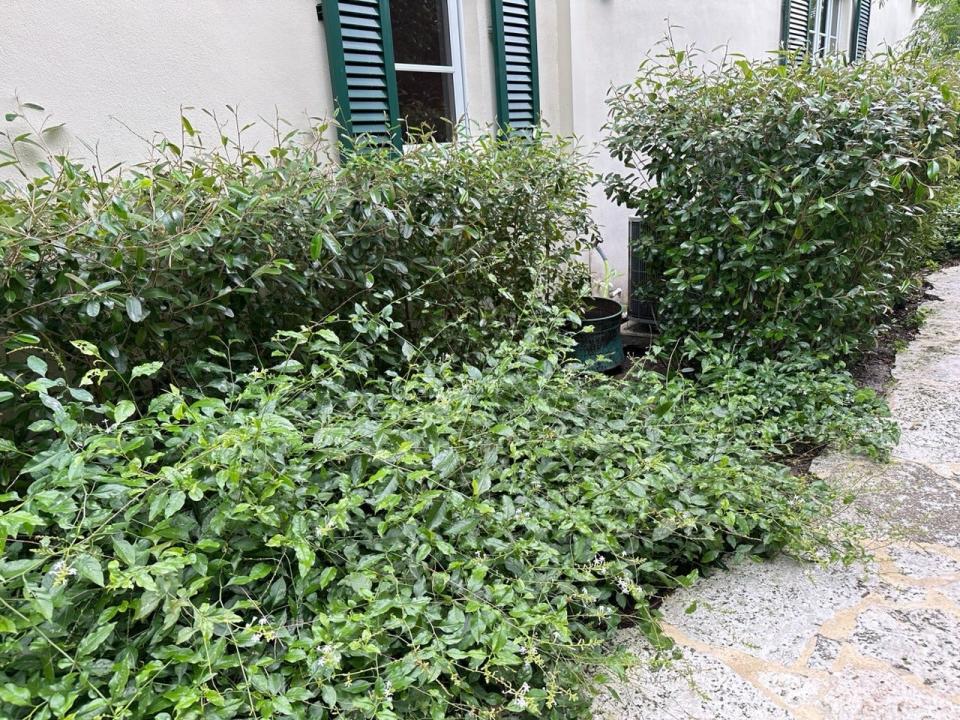
Instead of using grass along sidewalks where it requires excess watering, native ground covers are better looking, drought-resistant alternatives. And consider using less grass in your overall landscapes where instead you might add more color or fragrance.
Wonderful native groundcovers for full sun include frogfruit (Phyla nodiflora), beach verbena (Glandularia maritima), and sunshine mimosa (Mimosa strigillosa). This latter is a much tougher plant than its delicate looks would have you believe; it can withstand light foot traffic, drought, wind and full sun. Beneath the delicate, feathery foliage it produces sturdy deep-rooted stems that crisscross one another, staying close to the ground and forming a dense mat.
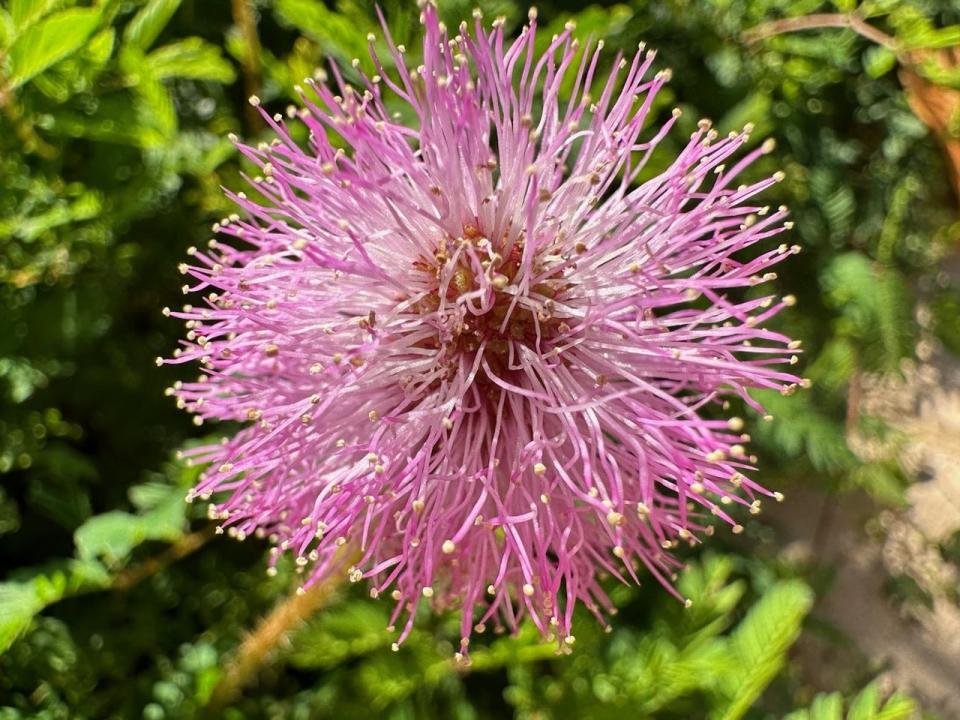
From spring to fall, delightful pink powderpuff like flowers rise above the small, bright green fernlike leaflets, which fold up when touched. It spreads rapidly and can cover several hundred square feet in a single season; the deep root system also aids in controlling erosion. Aside from its great value as a groundcover, sunshine mimosa is also a larval host plant for the little yellow, a tiny butterfly you will see flying close to the ground. It’s a nectar source for many other butterflies as well. If you have a sunny area where nothing else will grow, give this a try – you’ll be delighted with the results.
Frogfruit is another tough groundcover that is perfect for sun or part shade, forming a dense green mat interspersed with delightful pinkish white flowers. This can actually be mowed and in many instances can replace lawns altogether. It’s an important larval host plant to the white peacock butterfly and provides nectar for crescents, blues, hairstreaks, and metalmarks. We should all have this somewhere in our landscapes.
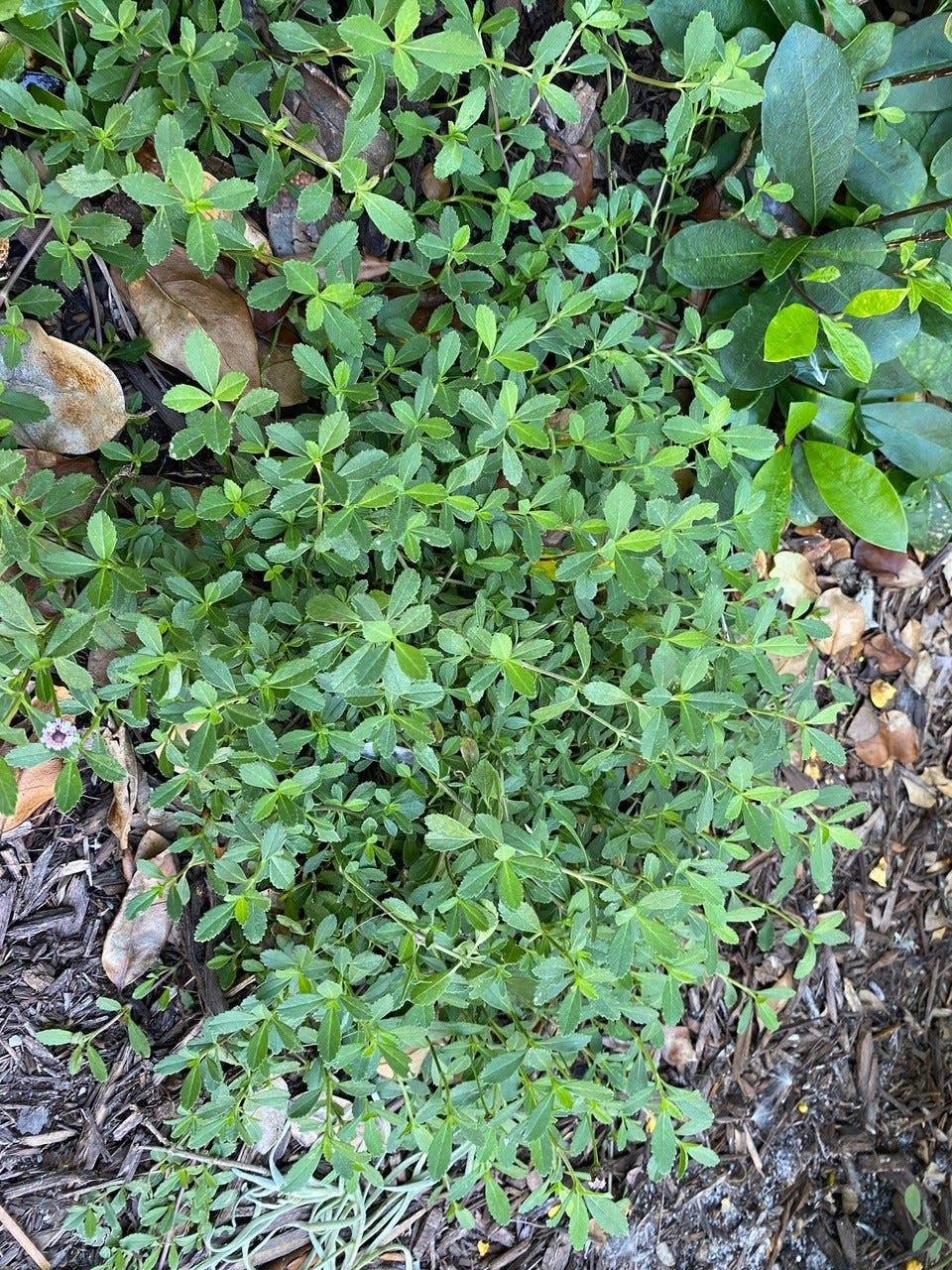
Shady areas are always difficult for grass but here again groundcovers work well and require little attention once established. Florida peperomia (Peperomia obtusifolia) tolerates deep shade with large glossy leaves on succulent stems that spread out across the ground. Upright fingerlike flower spikes are 2-3 inches long above the foliage.
River sage (Salvia misela) is a fast grower, effectively covering large shady areas with attractive, fragrant foliage sparkling with tiny blue flowers. Pineland snowberry (Chiococca parvifolia) with thick, shiny dark green leaves looks great on a shady rock wall or along a walkway. Its white flowers provide nectar for the julia and other butterflies; birds love the showy white berries that follow. This is drought-resistant and tolerates poor soils.
Swamp twinflower (Dyschoriste humistrata) makes an excellent ground cover or turf replacement in partly shady, well-drained soils. It will adapt to seasonally dry conditions as well. The light lavender flowers make this a welcome addition to any wildflower garden and it serves as a host plant for the beautiful common buckeye butterfly.
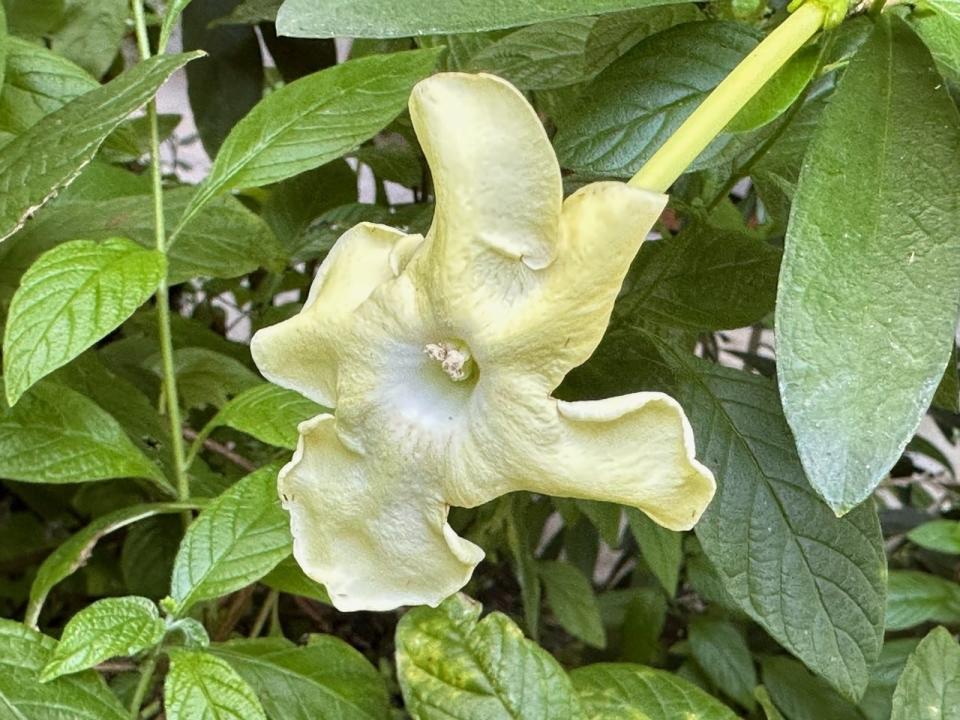
Fragrance is something we haven’t mentioned in a while. There is nothing like walking through a garden at dusk, when the scents of jasmine, brunfelsia or sweet almond bush are just intoxicating. The more subtle fragrance of native Simpson’s stopper and wild coffee are equally delightful.
Fill your gardens with fragrant flowers, reduce your lawn areas with native groundcovers and conserve water in the process. Stop applying chemicals and enjoy the company of the birds and butterflies who will visit your sustainable landscapes. And have a wonderful summer!
This article originally appeared on Palm Beach Daily News: How ground cover can take place of fertilized lawns

